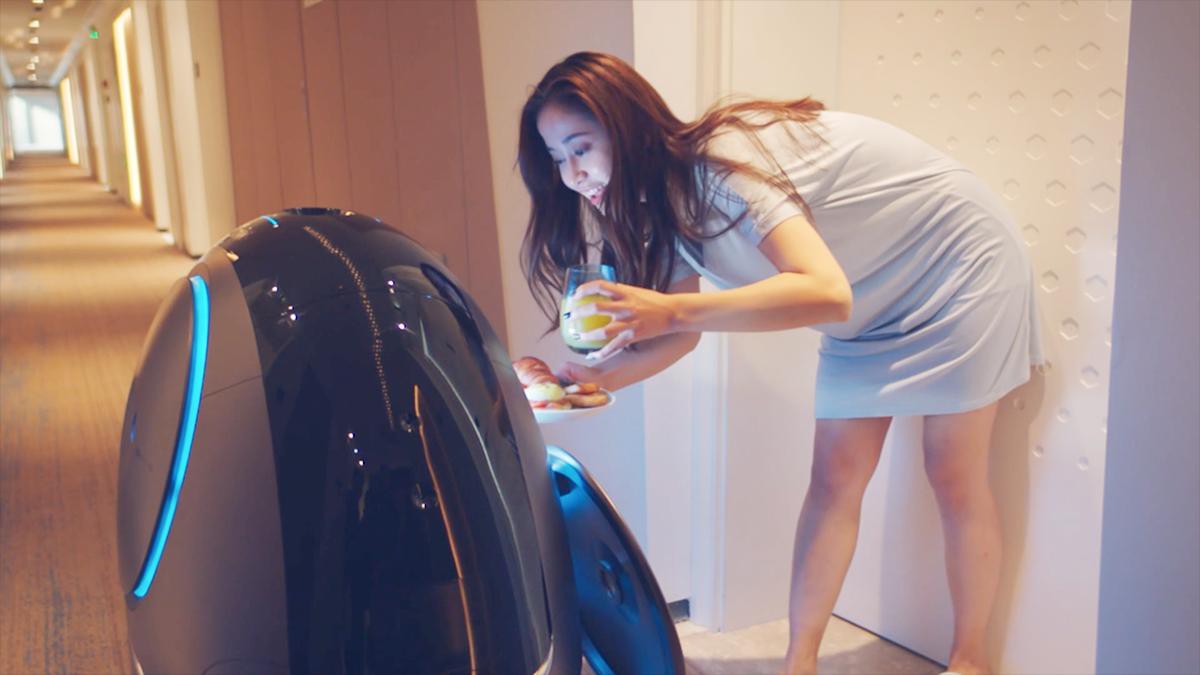“How Can I Help You?” The Emergence of Robots in Hotels and Restaurants

With super-human strength and precision, it’s hardly surprising that robots are replacing the demand for traditional manual labor.
You’ve likely seen examples of automated machines working in warehouses and factories around the world (1). Many companies are already utilizing robots to move heavy items, pack orders, and enhance quality control.
But in recent years, we’ve seen the emergence of intelligent machines in restaurants, bars, and even hotels. Hospitality robots present the opportunity to reduce costs, increase efficiency, and showcase new technology to a growing customer base.

But is the general public ready to embrace machines in customer service? And can robots prepare food with the same speed and reliability as a human worker?
The answer – at least in many cases – appears to be yes.
China’s retail and technology giant Alibaba recently opened the ‘Flyzoo’ hotel staffed by robotic servers and bartenders (2). With almost 300 rooms, the hotel uses mobile R2D2-style robots to deliver food, drinks, and fresh towels upon command.

Each room contains a ‘Tmall Genie’ – similar to Amazon’s Alexa – which uses voice recognition to place orders and adjust room settings. Downstairs, robotic bartenders can mix up to 20 different drinks ranging from coffee to cocktails (3).
The hotel also uses facial recognition for customers to check-in, access rooms, and even charge purchases to their account. The technology offers a unique – or for some, desirable - opportunity to stay in a hotel without any direct human interaction.
The Alibaba company - worth half a trillion US dollars – has big plans to sell robotics and AI software to the hotel industry. And Flyzoo works as both a hotel and a product showcase.
Robots are also making waves in the food industry, and in particular, the fast-food industry. Employing almost 4 million Americans, US fast-food restaurants now turn over more than 250 billion dollars a year (4).
Silicon Valley’s ‘Zume Pizza’ is one company using robots to revolutionize the pizza game. And the technology already extends far beyond making fresh pies (5). Machines prepare the dough, apply the sauce, and move pizzas around the kitchen faster than any veteran pizza chef. Robots load pizzas into trucks containing mobile ovens, which actually cook them on the way to the destination.
The company - which has raised $425 million in funding – plans to extend its technology to other applications. “Pizza was our prototype,” says CEO Alex Garden. “There’s no reason why this technology wouldn’t work for any restaurant or any food category.”
Another startup called ‘Chowbotics’ produces automated salad-making robots named Sally (6). Already deployed in restaurants, food courts, and hospitals, Sally can prepare a fresh salad with 8 ingredients in under one minute. The AI system also learns from previous selections to recommending popular combinations, or create new ones.
Chowbotics is already moving beyond salad, with new models that serve fruit and yogurt, protein bowls, and even Indian food. Like traditional vending machines, Sally thrives in locations with limited service hours, or where speed is a priority.
The introduction of robots into human workspaces is also producing some very unexpected results. A recent example of this is Flippy, a spatula-wielding, hamburger-flipping robot built by Miso Robotics (7). Dubbed as “the world’s first autonomous robotic kitchen assistant,” Flippy works alongside humans to increase speed and consistency.
Using cloud-based AI and thermal imaging (8), Flippy cooks each patty and notifies co-workers when they are ready for assembly. But after only two days in Pasadena’s Cali Burger, management decided to remove Flippy from the kitchen (9).
The reason? It was grilling patties faster than its human co-workers could assemble them.
CaliBurger still plans to install Flippy in 50 locations, but have not yet announced a return date. Miso Robotics is tweaking the Flippy design, searching for a level of efficiency that works more in harmony with its human co-workers.
As hotels and restaurants begin to embrace automation, the benefits soon become obvious. With faster service, fresher food, and lower operating costs, almost every US hotel and restaurant chain is considering a robotic approach.
In the future, robots will likely prepare much or even most of our food. And with enhanced heat, light, and flavor perception, they'll have skills that even top chefs will envy.
And to deliver impressive customer service, you won't need a great attitude. You'll need great programming.
Picture Credit:
https://www.alizila.com/video/b-roll-flyzoo-hotel/
https://www.cnn.com/travel/article/hotels-robot-future-travel/index.html
https://kr-asia.com/briefs-alibaba-opens-futuristic-hotel-flyzoo-in-hangzhou
Source List:
1. https://www.siliconrepublic.com/machines/automated-factories-video
2. https://www.businessinsider.com/r-at-alibabas-futuristic-hotel-robots-deliver-towels-and-mix-cocktails-2019-1?IR=T
3. https://www.scmp.com/tech/innovation/article/2173406/robotic-bartenders-and-smart-hotels-alibabas-vision-future
4. https://www.statista.com/statistics/196614/revenue-of-the-us-fast-food-restaurant-industry-since-2002/
5. https://techcrunch.com/2018/04/25/zume-looks-to-life-beyond-pizza/
6. https://thespoon.tech/chowbotics-finds-robot-made-salad-success-in-hospitals/
7. https://www.livescience.com/61994-flippy-burger-flipping-robot-flops.html
8. https://vimeo.com/207293141
9. https://www.youtube.com/watch?v=vPTcIutsoTg
Thanks for helping to keep our community civil!
This post is an advertisement, or vandalism. It is not useful or relevant to the current topic.
You flagged this as spam. Undo flag.Flag Post


